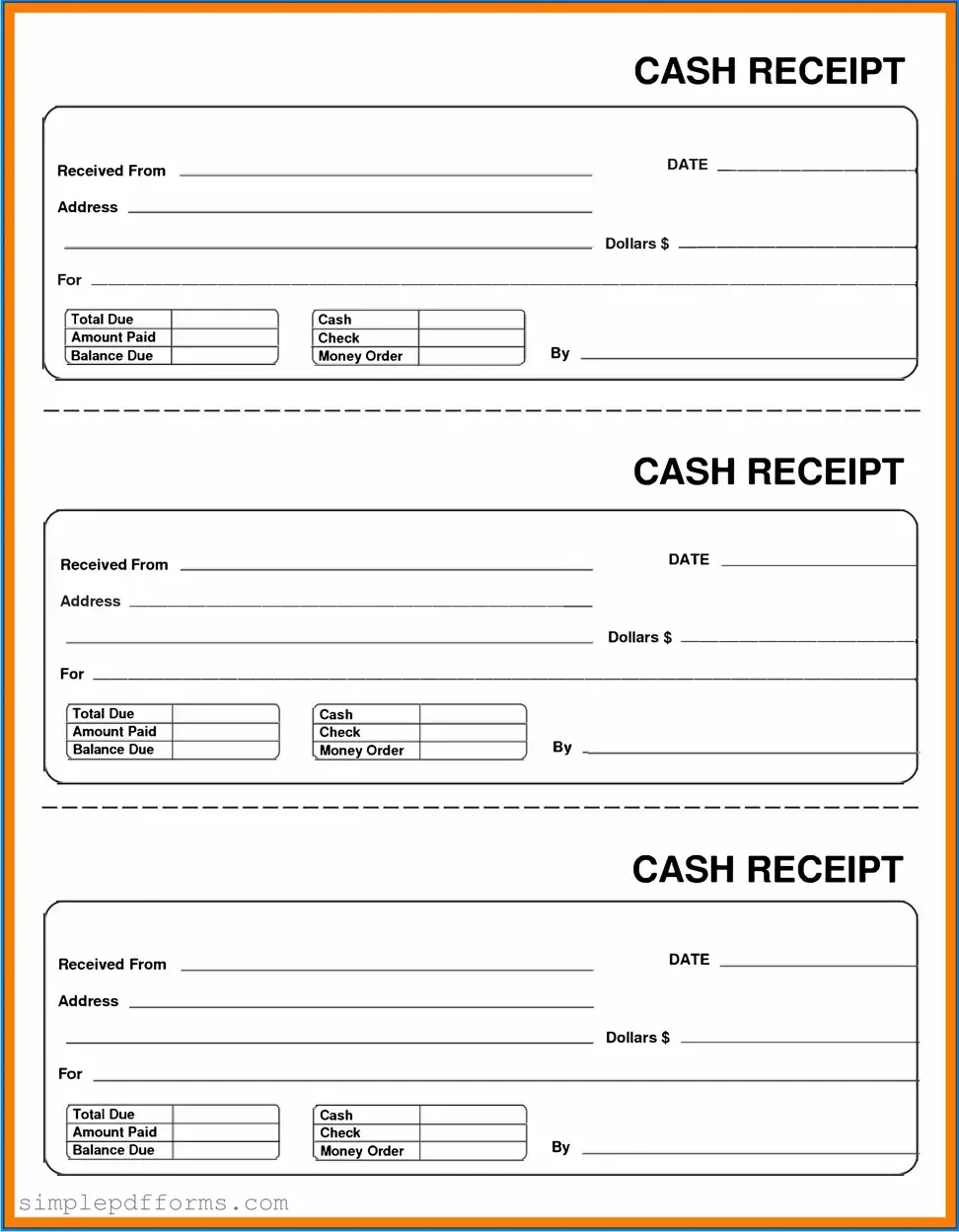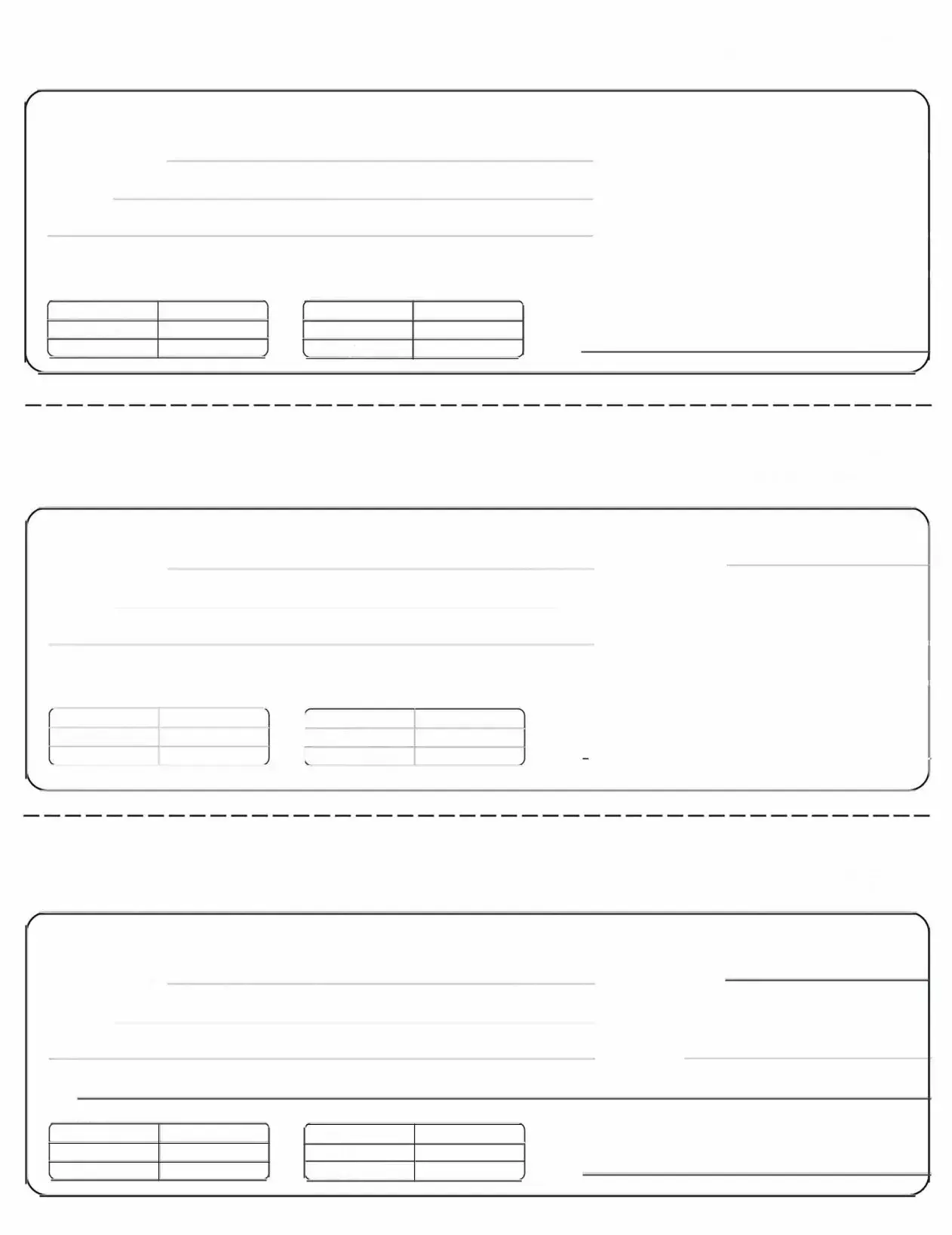Filling out a Cash Receipt form may seem straightforward, but many people make common mistakes that can lead to confusion or delays. One of the most frequent errors is failing to include the correct date. This small detail is crucial, as it helps keep accurate records. Without a proper date, tracking transactions can become problematic.
Another common mistake is not providing a clear description of the transaction. It's important to specify what the payment is for. A vague description can lead to misunderstandings later on. For instance, simply writing "payment" does not clarify the purpose, while a more detailed note, such as "payment for invoice #1234," offers clarity.
People often overlook the importance of entering the correct amount. Double-checking figures can prevent discrepancies in financial records. An incorrect amount can lead to issues not only for accounting purposes but also for the parties involved in the transaction.
Additionally, some individuals forget to sign the Cash Receipt form. A signature serves as a confirmation of the transaction. Without it, the document may be considered incomplete, which could complicate future audits or reconciliations.
Another mistake is neglecting to provide the payer's information. Including the name and contact details of the person or entity making the payment is essential. This information helps in tracking and verifying payments, ensuring that all records are accurate and up to date.
In some cases, people may not keep a copy of the completed Cash Receipt form. Retaining a copy is vital for personal records and can serve as proof of payment if any disputes arise. It’s always wise to have documentation on hand for future reference.
Finally, failing to follow the proper sequence when filling out the form can lead to errors. Each section should be completed in order, ensuring that no fields are missed. Taking a moment to review the entire form before submitting it can save time and prevent mistakes.

